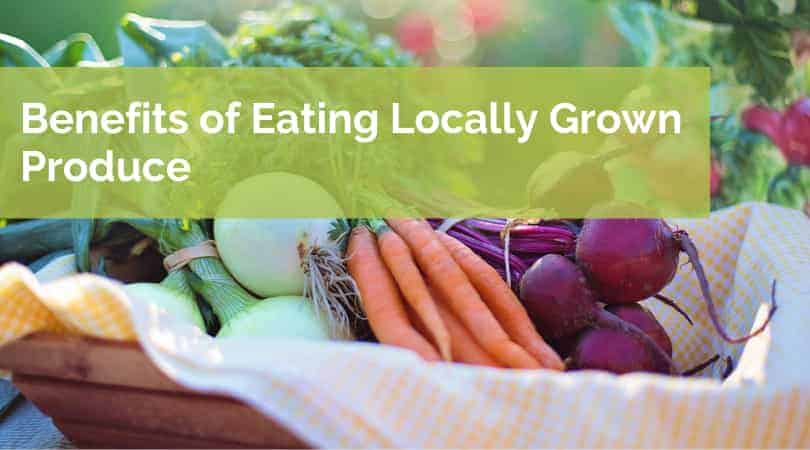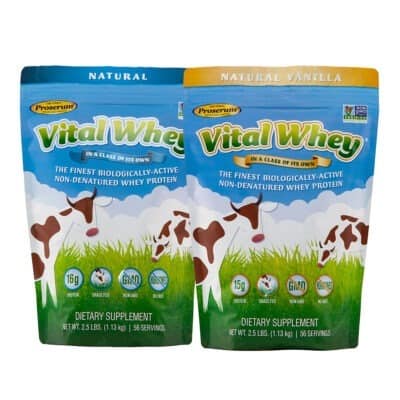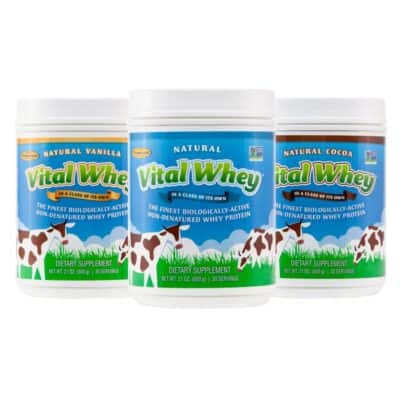
Sustainability is more than just a popular buzzword – it’s the way that we can positively shape the planet for ourselves and future generations. In addition to government and corporate policy changes, we also have a role in sustainable practices.
Eating local produce is one of the best ways you can personally promote sustainability.
With a single purchase, you can support businesses in your community, the regional economy and the planet all while reaping the benefits of consuming fresh and delicious fruits and vegetables.
Why you should buy local produce
It may be easy to stop by the nearest big-chain grocery store to pick up some fruits and vegetables for your meals, but there is so much that you miss out on when you don’t choose locally grown produce.
Here are some of the main benefits of locally grown produce:
Fresher Produce:
Local produce is often grown within miles of where you shop, meaning that it takes much less time to get from the farm to your table. Without the added travel time, locally grown produce can better retain its freshness without the need of extra pesticides or preservatives to maintain their integrity. Fresher produce also means that it has a richer flavor and lasts longer at your home, thus reducing food waste from rotten produce.
Better Nutrient Content:
Along with retaining optimal freshness, local produce grown in-season generally contains more nutrients than imported produce or items sourced from further away. Fruits and vegetables begin to rapidly lose nutrients as soon as they’re picked, so the sooner they can reach your plate, the more nutrients you’re able to get from them.
In fact, one study found that broccoli imported from out of the country contained half as much vitamin C as broccoli sourced locally. Another study found that green peas can lose up to 51% of their vitamin C content within the first 48 hours post-harvest.
Lower Carbon Footprint:
Local produce contributes a lower carbon footprint than fruits and vegetables that have to travel long distances before making it to your table. Produce imported from other countries has to travel by boat or plane, and then by truck or train, to end up at your grocery store. The added travel, labor, and coordination needed to get from point A to point B all require natural resources which increases carbon emissions and places further strain on our planet.
Produce has an overall smaller carbon footprint than animal products, and some research suggests that most carbon footprint occurs in the production phase of produce. Still, all of the transportation methods required to move it all over the world emit more greenhouse gases than locally grown produce.
Fewer Chemicals:
Even if all local produce isn’t grown organically, smaller-scale local farms tend to use fewer pesticides and herbicides than large-scale farms. Excessive pesticide use is linked to decreased biodiversity of animals and plants in the environment and contamination of vital water sources.
Exposure to pesticide and herbicide residues on produce is also correlated with disease risk in people. This issue is even more severe among farmworkers who have a higher exposure to these chemicals on a regular basis.
Local produce found at the farmer’s market is not only more nutritious and fresh, but it also may contain far less chemicals than your standard imports from big chain grocery stores.
Supports Local Farmers/Businesses:
Produce grown in your hometown is brought to you by hard-working farmers and families who are loyal to their communities. Eating locally helps build relationships between you and the farmers, and keeps the local economy thriving.
Purchasing food grown at local farms helps support local industry to ensure those farmers can continue to run their businesses and provide us with delicious and nutritious goods.
Preserves Produce Diversity:
Large-scale production farms generally choose a harvest based on its ability to ripen at a predictable pace and withstand the processing and transport of those particular items. This limits genetic diversity of those crops, which makes plants more susceptible to illness and waste.
On the other hand, local farms often grow many varieties of produce. This includes foods that come in numerous colors, shapes, and flavors, in order to maximize their harvesting potential through diversity in their crops.
As a buyer of local produce, you can also benefit from produce diversity. Instead of being limited to a standard selection of fruits and vegetables that don’t change throughout the year, you can try hybrid breeds of fruits and vegetables or even new varieties of familiar (and unfamiliar) foods.
How to eat more sustainably year-round
April is Sustainability Month, but the practices that help the environment are beneficial all year round. Fortunately, there are ways that you can enjoy local produce and make sustainable eating choices during any season.
Farmers markets are generally available spring through fall, making it easy to purchase fresh produce from your local farms. During the colder months, you can still look for locally grown winter produce at the supermarket. You can also support locally-owned businesses by purchasing frozen produce or packaged items that were manufactured nearby.
Sustainability doesn’t have to stop with food. Here are some additional tips that can help you contribute to a more sustainable and eco conscious routine.
- Don’t forget your reusable bags: Try packing a few reusable bags and leaving them in places that will be conducive you using them. Leaving a few in your car, near your front door, or next to your grocery list will increase the likelihood of remembering them the next time you go shopping.
- Try out portable and reusable utensils and straws: Think about how often you use plastic cutlery. Chances are, if you were to keep every disposable utensil and straw you used throughout the year you would have enough to host a fairly decent sized dinner party. Carrying your own disposable utensils can make a significant impact in reducing your carbon footprint.
- Shop for Seasonal Items: Purchasing produce grown during that season increases the chances of those items being sourced locally. Items not consistent with the season are often imported from distant places which means they will have a larger footprint.
- Brainstorm a weekly meal plan: Planning out your weekly meals does not have to mean creating an exact breakdown of each meal, but having a rough outline of the meals you’d like to prepare can help you recycle ingredients and food items and therefore allow you to cut down on possible waste and spoilage of your foods. It can also help you cut down on cost by allowing you to buy in bulk and even potentially plan for meals based on healthy concepts.
Sustainable choices can be made when buying other health and wellness products, like dietary supplements. Well Wisdom commits to sustainability by using ingredients that minimize waste products and are sourced from sustainable farming practices.
For example, Well Wisdom Glut Immune is a vegan product that has a lower carbon footprint in comparison to others that utilize animal-derived ingredients.
Well Wisdom products are also packed in 100% recyclable materials to reduce waste.
Looking for recipes to eat more sustainably? Check out our sustainable greek yogurt bowl and green smoothie recipes.
There are many ways that you can adopt a more sustainable eating pattern. One of the best ways is to enjoy local produce as much as possible. Not only can this add more fruits and vegetables to your diet, but it also supports the environment, as well as the local economy and farmers.
References
1. Wunderlich SM, Feldman C, Kane S, Hazhin T. Nutritional quality of organic, conventional, and seasonally grown broccoli using vitamin C as a marker. Int J Food Sci Nutr. 2008 Feb;59(1):34-45. doi: 10.1080/09637480701453637.
2. Phillips KM, Tarrago-Trania MT, Gebhardt SE, Exler J, Patterson KY, Haytowitz DB, Pehrsson PR, Holden JM. Stability of vitamin C in frozen raw fruit and vegetable homogenates. J Food Comp Anal, 2010;23(3): 253-259. https://www.sciencedirect.com/science/article/abs/pii/S0889157510000074
3. Center for Sustainable Systems, University of Michigan. 2020. “Carbon Footprint Factsheet.” Pub. No. CSS09-05. Available from: http://css.umich.edu/factsheets/carbon-footprint-factsheet
4. Weber CL, Matthews HS. Food-Miles and the Relative Climate Impacts of Food Choices in the United States. Environ Sci Technol. 2008;42(10):3508–3513. https://pubs.acs.org/doi/10.1021/es702969f
5. Nicolopoulou-Stamati, P., Maipas, S., Kotampas, C., Stamatis, P. and Hens, L. (2016). Chemical Pesticides and Human Health: The Urgent Need for a New Concept in Agriculture. Front. Public Health 4:148. doi: 10.3389/fpubh.2016.00148
6. Damalas, C. A., & Koutroubas, S. D. (2016). Farmers’ Exposure to Pesticides: Toxicity Types and Ways of Prevention. Toxics, 4(1), 1. https://doi.org/10.3390/toxics4010001
- Should You Take Whey Protein Powder After Surgery? - March 2, 2023
- How Much Protein is Too Much? - January 30, 2023
- Is Whey Protein Keto Friendly? - January 30, 2023





